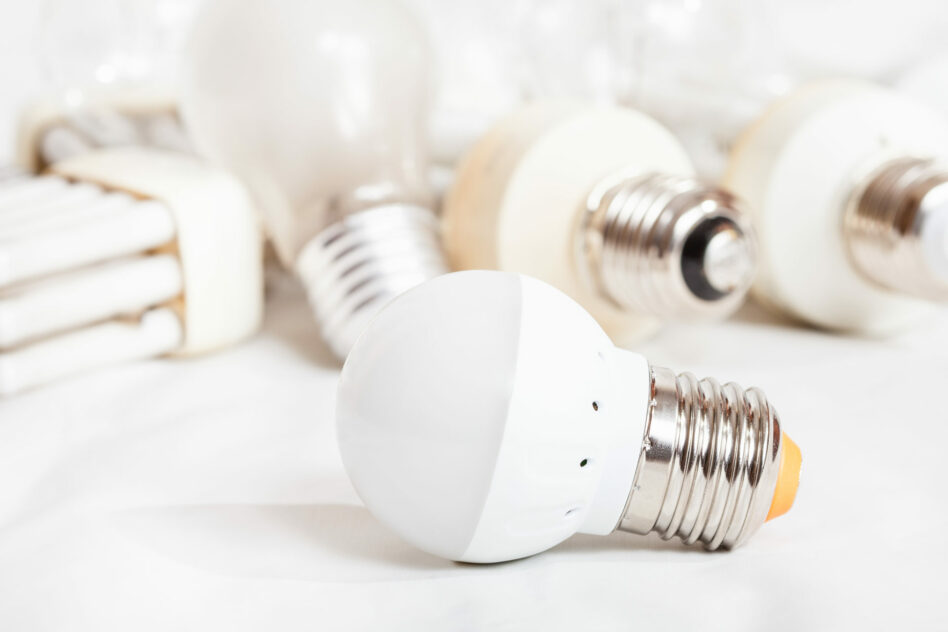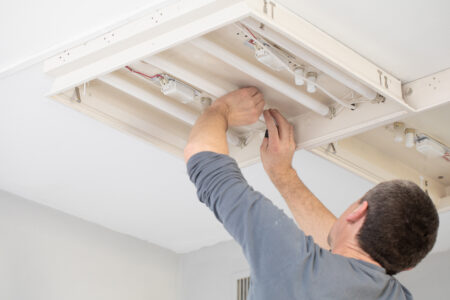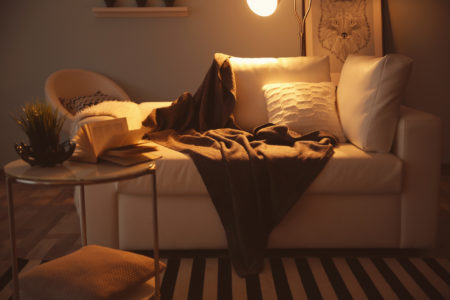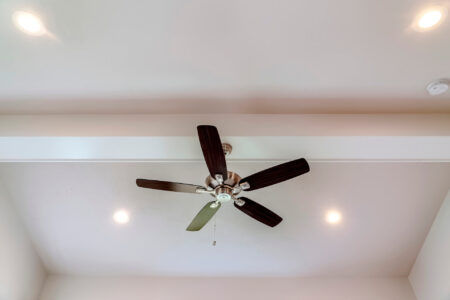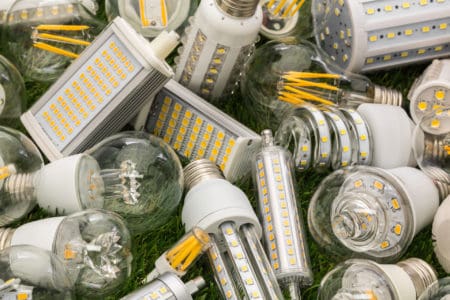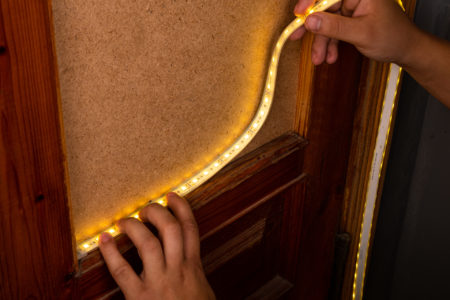LED light bulbs last long, and you should not need to dispose of one soon after buying it. They should provide between 20,000 and 100,000 hours of light, meaning they should last 7 years or more. But they don’t last forever; you will have to replace them eventually. So, how should you dispose of LED light bulbs?
Some areas allow you to legally dispose of LED light bulbs in the regular trash because they don’t contain mercury. But they have trace amounts of other harmful chemicals, so it’s best to send them to a certified recycling plant, whether or not your local laws require you to do so.
When you decide what to do with your old LED light bulbs, you should consider two things. The legal aspect depends on your local laws and regulations, but you should also consider the ethical side of things, especially concerning environmental protection. Let’s look at the matter from both sides so you can safely, legally, and ethically dispose of your broken LED bulbs.
Can You Legally Dispose Of LED Light Bulbs In Regular Trash?
You shouldn’t throw light bulbs of any kind in the trash. Many light bulbs contain mercury or radioactive materials like thorium and Krypton-85, and letting these end up in a dumping site or landfill can be catastrophic.
Thankfully, LED light bulbs don’t contain mercury, but they could still have trace amounts of other harmful materials. So even though they are safer to dispose of than different types of light bulbs, it’s still not advisable. But what does the law say about the matter?
The exact details will depend on where you live. Some countries and states don’t have any laws that force you to recycle LED light bulbs, and you may legally throw them in the trash. However, most don’t. Some examples of states with stringent laws about not throwing light bulbs into the garbage are:
- California
- Maine
- Massachusetts
- New Hampshire
- Vermont
- Washington
It’s always best to check your local government’s website to find out how to legally dispose of your LED light bulbs. However, legality is just one side of the coin, and the fact that you could do it doesn’t necessarily mean you should.
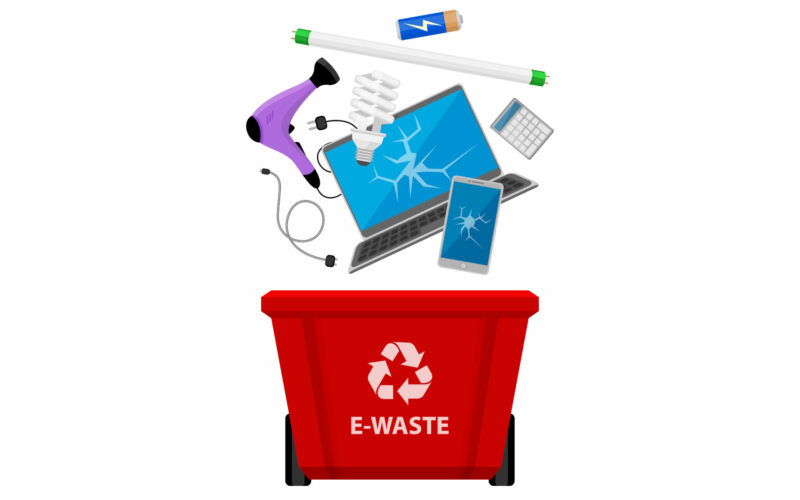
Should You Throw Your LED Light Bulbs In The Trash?
Ethics and the law don’t always see eye to eye, and just because something is legal doesn’t always make it good. Here are a few reasons why you should not throw your LED light bulbs in the bin.
Hazardous Materials
We know that most light bulbs are dangerous for the environment due to their high levels of mercury, so they should never end up in landfills. In 2012 a study found that LED light bulbs may be even more hazardous to the environment. Many governments already categorize LED light bulbs as hazardous.
The reason is their high content of different metals, including lead, copper, and zinc, all in quantities well above legal limits. Whereas most traditional light bulbs use gas and vacuums to make them work, LEDs don’t have these, and to compensate, LED light bulbs need more metallic components. They exceed the threshold limits.
The reason why these metals are dangerous in landfills is two-fold. Firstly, some may release harmful chemicals into the earth and underground water. It damages the environment, affects plant growth, and could poison animals or people who drink the affected water or eat the plants. It’s also worth mentioning that LEDs contain trace amounts of arsenic, which is never healthy to ingest.
A second reason is that these metals could take centuries to decompose. People often talk about plastic and other synthetic materials that don’t decompose quickly, but some metals have the same issues.
Dangerous Components
On a more immediate level, LED light bulbs pose a threat to anyone who handles your waste. Most regions have laws about not disposing of items that could be dangerous in the usual way, and many of those items include glass that could cut and infect those who work with garbage.
LED light bulbs contain glass and pieces of metal that, when they are damaged, could cause people physical harm. Those who handle your garbage don’t always think about the possibility of a sharp object in the trash bag. A piece of glass or a shard of metal could easily cut a hole through the bag and either prick or cut a person handling the trash.
Of course, just saying that might not sound too bad, but bear in mind that the piece of glass or metal has been in the trash, a literal breeding ground for bacteria and other disease-causing critters. Getting infected from a wound inflicted by something in the garbage doesn’t take much, and the infection could even become life-threatening, like gangrene.
Disposing of your LED light bulbs the easy way (in the garbage) isn’t worth ruining someone’s health or life.
Recycling Your LED Light Bulbs
Looking at all these reasons why you shouldn’t just throw your light bulbs in the trash, it’s pretty clear that recycling is the way to go, and there are many benefits. Apart from the ones we already mentioned, another matter to keep in mind is the number of non-renewable materials that your LED light bulb contains.
For example, the same metals we already mentioned (lead, copper, and zinc) are non-renewable, meaning we have limited quantities on earth. Sure, they might not be at risk of running out soon, but the resources will be depleted at some point.
Recycling your old, broken LED light bulbs ensures that at least some of those metals can be used again to make something else and with the large quantities of the metals that a light bulb contains, that could make a massive difference.

How To Recycle Your LED Light Bulbs
Like throwing it in the trash, you should never just throw your LED light bulbs in with the rest of your usual recycling. Some states have the necessary processes in place to recycle them, but that is something you will have to check with your local government.
The problem is that LED light bulbs aren’t simply glass or metal. They are a combination of both, and more than that, LED light bulbs also contain logic controller chips that help them to function. That classifies LED light bulbs as electronics rather than regular waste, and you should recycle them accordingly.
Luckily this is easy in most regions since electronics recycling is a massive industry.
You should first determine if your state laws include LED light bulb recycling in the standard recycling program. If they do, you are good to go. Find out where to put them (if there’s an electronics bin, that’s usually the one), then treat your LED light bulbs like any other recycling.
You can find this by doing a quick Google search for something like “Can I recycle LED light bulbs in (your city and state here).”
Another helpful tool is the website berecycled.org. Simply click on the drop-down menu and choose the type of material you want to recycle, then enter your zip code in the text box. It will tell you what the local government requires in terms of recycling LED light bulbs and give you other options if the government doesn’t offer the service.
Step 2: Find An Alternative Recycling Option
If your local government doesn’t allow you to recycle LED light bulbs with your other recycling, other companies are always willing to take them off your hands. Some of these will be local, but if you don’t live in one of the primary centers, you may have trouble finding one near you.
Again, Google (or your search engine of choice) is your friend in this scenario. You can easily find someone who will handle the recycling by searching for “where to recycle LED light bulbs in (your area).
This is also where berecycled.org might come in useful. Apart from simply telling you whether your local government has recycling options, it might also point out a few recycling centers nearby. However, this doesn’t always work as it should because the website relies on its users to submit that information.
Step 3: Preparing Your Light Bulbs For Recycling
Your recycling center can give you further guidance, but they generally don’t have many requirements for preparing LED light bulbs. A generally accepted rule is that there shouldn’t be anything else on it, like a price tag. Peel those off and recycle them in the usual way. Also, if the light bulb is shattered or has sharp edges, ask them how you should handle that situation.
Step 4: Getting The Light Bulbs To The Recycling Center
Depending on your chosen option, there might be a few ways to handle it.
- Most local governments have a collection system to pick up your LED light bulbs for recycling. If you have a local electronics recycling service, that’s probably the one you should use.
- Some recycling plants have drop-off bins at central locations, like gas stations or popular shops like Walmart or Target stores. Look out for these recycling bins next time you go to the shops, or you can contact the recycling centers to find out where you can drop them off.
- If the recycling center isn’t too far from your home, you could simply drop them off there yourself.
- The final option is to send the light bulbs to the recycling plant via courier or the postal service. This might seem like a pain, but if you live far from the recycling plant, it really is your best option.
Reusing Your Old LED Light Bulbs
There is another option if you don’t have an easy recycling option available, especially if you are creative. Many people have done some fantastic DIY decorative projects from old, broken LED light bulbs; all you need is creativity and maybe some electronics knowledge.
Some people have used these old light bulbs to make things like disco lights, spinning lights, and even valuable devices like water level indicators. Of course, many of these uses still require you to recycle some parts of the light bulb, but at least you will benefit from some of the components and make the package for the recycling center a little bit lighter.
Which Parts Of The LED Light Bulb Can I Reuse?
The most common point of failure in an LED light bulb is the LED strip itself; more often than not, it’s just one of the LEDs that fails. Because the LEDs are connected in serial, none of them work if one dies. The second most common failure component is the fusing resistor on the light bulb’s controller board.
So, which components you can reuse will depend on the type of light bulb you have, what exactly went wrong, and what you can do with it. In most of the examples mentioned above, the users removed all of the internal circuitry and mainly used the shell with a few replacement components.
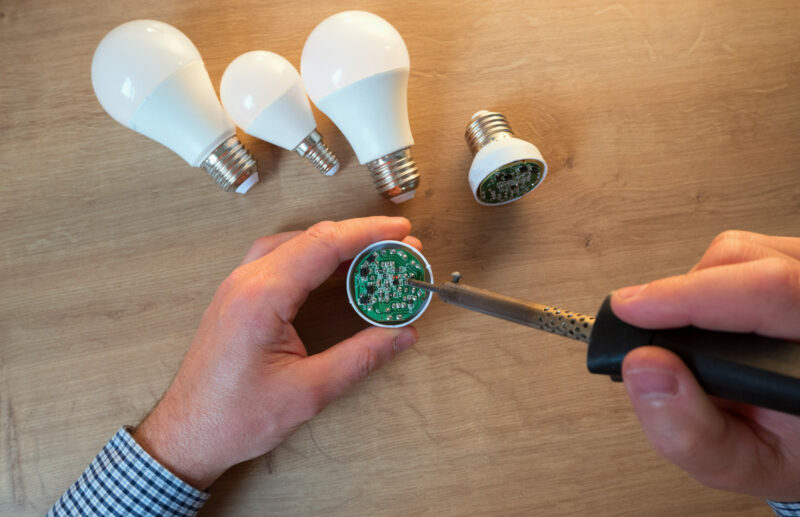
You should be able to use the following components:
- The shell or outer casing. Some users paint the case to create exciting decorations, like imitation easter eggs or Christmas baubles. The casing has infinite uses, limited only by your imagination.
- The LED strip may also be useful. Sometimes, if it’s one of the other components that failed, you can still use the LED strip in other decorative projects, like Christmas lights.
- All of the electronics. Depending on your knowledge of electronics, you might be able to salvage some components like capacitors, resistors, or transistors. LED light bulbs will fail if even one of the components stops working, so if you’re a professional in electronics, you can determine which component failed and reuse all the rest.
